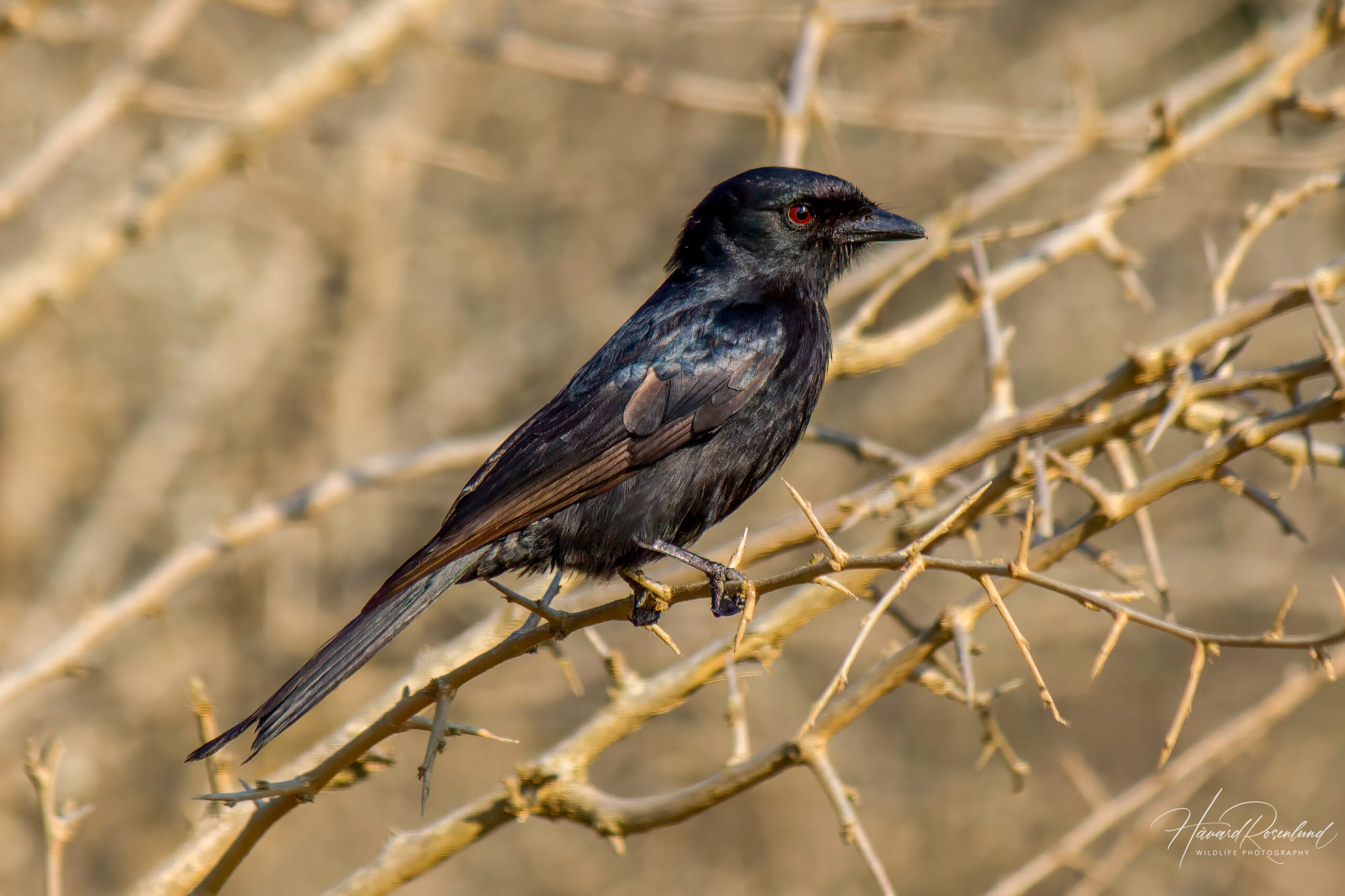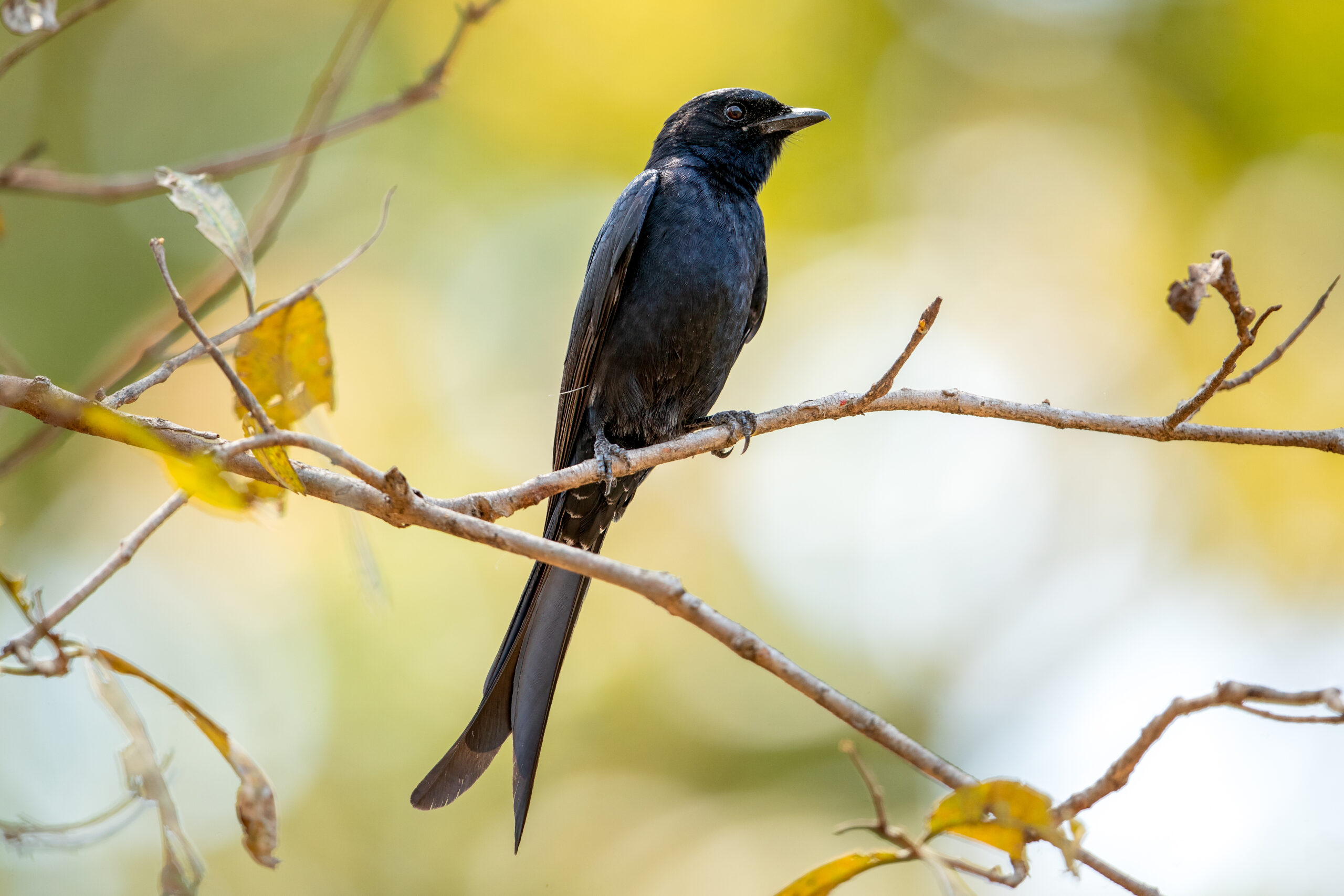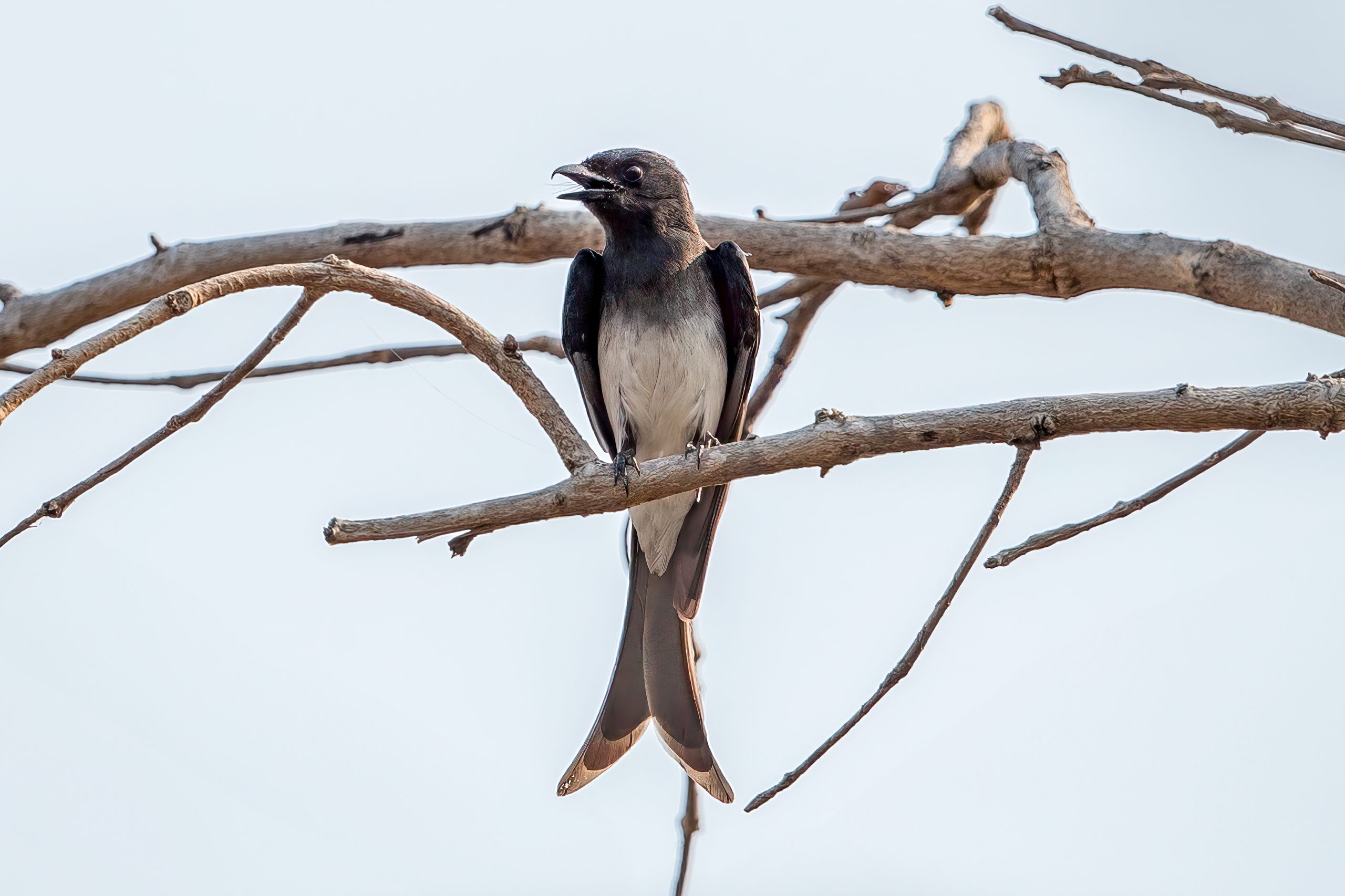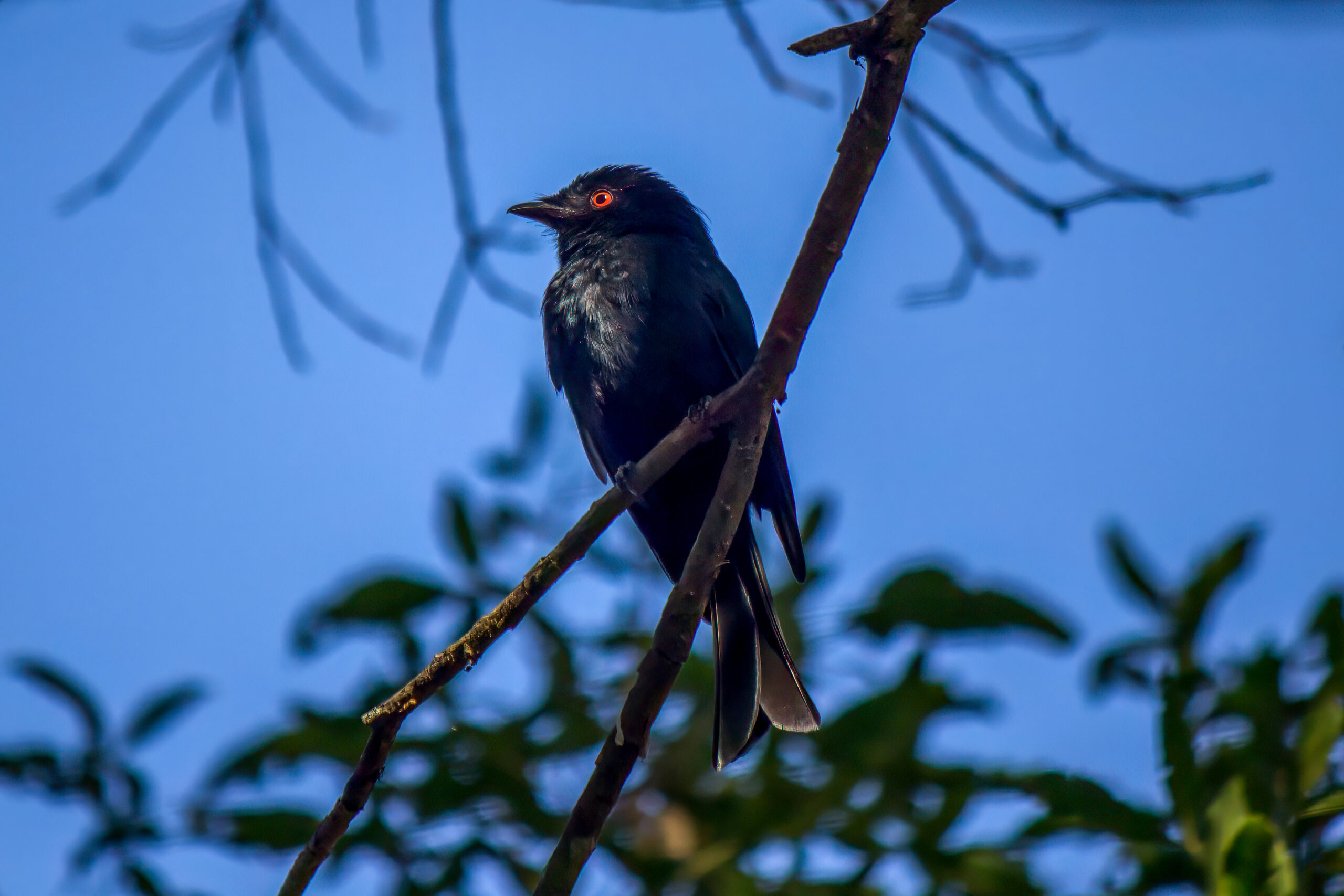Description
The fork-tailed drongo or common drongo (Dicrurus adsimilis) is a very common species of passerine bird found across most of sub-Saharan Africa. It reaches a length of 23-26 cm (9-10 in). It is glossy black all over its body. Males are a bit glossier than females. The tail is long and forked, the bill is strong, and the eyes are a deep red. It is very similar to the square-tailed drongo (Dicrurus ludwigii), but the fork-tailed drongo is larger, and has a longer and more forked tail. The square-tailed drongo is generally shyer and found in denser habitats than the fork-tailed.
Diet & habitat
The fork-tailed drongo can be found in various habitats and will only shy away from the most arid deserts and very dense forests. It is often found in savannah woodlands, grasslands with scattered trees, plantations, gardens, and parks. It has a highly variable and adaptable diet. Insects are the most common prey, which it catches in flight or on the ground, but it will also eat vertebrates such as small reptiles, fish and birds.
Kleptoparasitism
The fork-tailed drongo is well-known as a kleptoparasite, which means it steals food from other animals. A study found that it spends up to a quarter of its time following other animal species. The southern pied babbler (Turdoides bicolor) and meerkats (Suricata suricatta) are well-known birds and mammals frequently followed by drongos. The drongo is usually accepted by the other animals as it works as a sentry that keeps guard and it will give alarm calls if danger approaches. Sometimes the drongo will give a fake warning call, and it can even mimic the warning call of the species it follows. This will cause the other animals to flee. It can then unperturbed fly down from its perch and steal whatever food was left behind in the panic. It will also follow larger herbivores, such as antelopes, where it will catch insects disturbed by the activity and movement of the larger animal.
Nesting
The nest is a small cup made of grass, twigs, and similar plant materials, and is bound together with spider web. It is usually set between the branches of a fork in a tree 4-6 meters above ground. The female lays 2-5 eggs, which are incubated by both parents for 15-18 days. The chicks are fed by both parents and will leave the nest after 16-22 days.
Status
The fork-tailed drongo is a very common bird both inside and outside protected areas. It does well in most habitats and there are no threats to the species. It is listed as least concern on the IUCN Red List.









